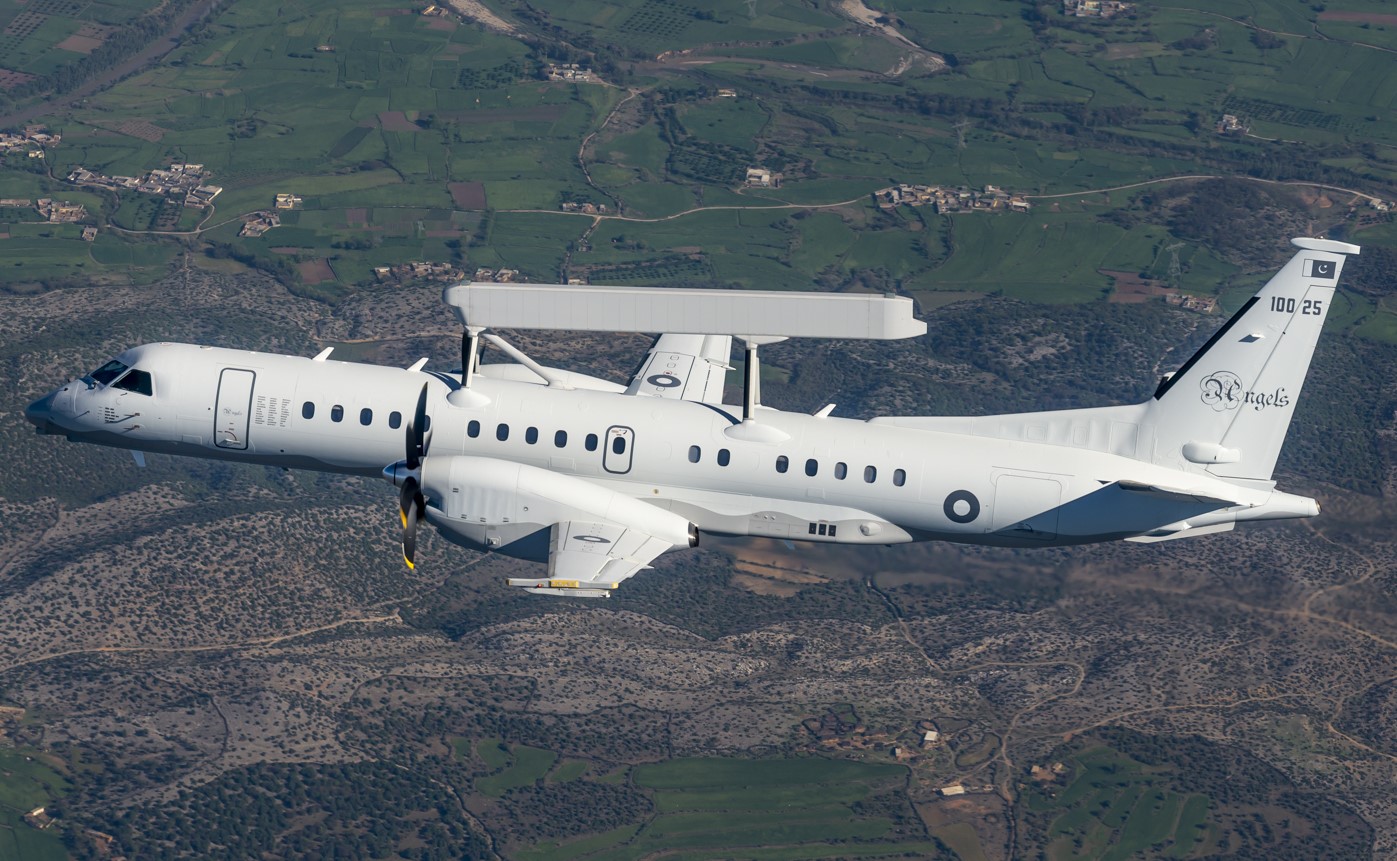SOURCE: AFI


Recent developments in the Pakistan Air Force’s (PAF) operations have raised eyebrows in defense circles, with reports suggesting that the PAF may have allowed Chinese engineers to modify Europe’s advanced Saab 2000 Erieye Airborne Early Warning and Control (AEW&C) aircraft to integrate with Chinese-made JF-17 and J-10CE fighter jets.
This integration, necessitated by the technological incompatibility between the Swedish-built AWACS and Chinese platforms, could compromise some of Europe’s most advanced AEW&C technologies. Furthermore, the incorporation of Chinese CHL-906 electronic warfare (EW) systems into these platforms has significantly enhanced their radar reconnaissance, jamming, and command-and-control capabilities, as demonstrated during the intense Indo-Pak conflict of Operation Sindoor in May 2025. This development raises critical questions about the security of Western defense technologies and the evolving dynamics of Pakistan’s networked warfare capabilities.
The Saab 2000 Erieye, equipped with an Active Electronically Scanned Array (AESA) radar offering 270-degree coverage and a 450-km detection range, is a cornerstone of the PAF’s airborne surveillance and command capabilities. The PAF operates seven such aircraft, following the loss of two during Operation Sindoor—one to an Indian S-400 missile 314 km inside Pakistan and another to a BrahMos missile strike at Bholari Air Base. However, the Erieye’s NATO-standard Link-17 datalink is inherently incompatible with the Chinese datalinks used by the PAF’s JF-17 Block III and J-10CE fighters, which rely on Chinese PL-15E missiles and KLJ-7A or WS-10B avionics, respectively. This mismatch limits real-time data sharing critical for networked warfare, such as guiding long-range missiles or coordinating air defenses.
Defense reports suggest that the PAF, with assistance from Chinese engineers, may have modified the Saab 2000’s systems to bridge this gap, enabling integration with JF-17s and J-10CEs. This likely involved adapting the Erieye’s datalink to communicate with Chinese platforms, a process that would require sharing sensitive technical details of the Swedish system with China. Such modifications risk compromising the Erieye’s proprietary technology, potentially exposing vulnerabilities to adversaries and undermining the trust of European suppliers like Saab. The move could also have broader implications for NATO allies using similar systems, as China’s access to Erieye’s architecture might enable countermeasures or reverse-engineering.
Adding to the PAF’s capabilities, the Saab 2000 Erieye platforms are believed to be equipped with Chinese CHL-906 electronic warfare systems, enhancing their effectiveness in contested battlespaces. The CHL-906, a sophisticated EW suite, provides radar reconnaissance, jamming, and command-and-control functions, enabling the AWACS to disrupt enemy communications, jam radar signals, and coordinate complex operations. During Operation Sindoor, launched on May 7, 2025, in response to the Pahalgam terror attack, the PAF’s networked warfare approach—integrating Saab 2000 AWACS, JF-17s, J-10CEs, and ground-based HQ-9 air defenses—demonstrated the CHL-906’s impact. Reports indicate that the AWACS guided PL-15E missiles fired from J-10CEs, using its S-band radar and Link-17 to track Indian aircraft up to 100 km inside Indian airspace, though Indian electronic countermeasures reportedly neutralized these missiles.
The CHL-906’s integration enhances the Saab 2000’s self-protection suite, which already includes radar warning receivers, laser warning systems, and chaff/flare dispensers. By adding advanced jamming and reconnaissance capabilities, the CHL-906 allows the AWACS to operate effectively in dense electronic warfare environments, as seen in Operation Sindoor. This upgrade aligns with Pakistan’s broader shift toward Chinese systems, with the PAF set to acquire KJ-500 AEW&C aircraft to replace lost Saab 2000s, further deepening its reliance on Chinese technology.
The PAF’s decision to allow Chinese engineers to modify the Saab 2000 Erieye raises serious concerns about the security of Western defense technologies. By sharing access to the Erieye’s AESA radar and datalink systems, Pakistan may have inadvertently exposed vulnerabilities that could be exploited by China or shared with other adversaries. This move could strain relations with Saab and other European defense partners, who may view such actions as a breach of trust. Moreover, the integration of Chinese CHL-906 EW systems into a Western platform highlights Pakistan’s pragmatic approach to building a hybrid air force, blending European, American, and Chinese technologies to create a formidable networked warfare capability.
Operation Sindoor exposed both the strengths and vulnerabilities of this approach. While the PAF’s integrated “kill web”—combining Saab 2000 AWACS, J-10CEs, JF-17s, and CHL-906 systems—enabled coordinated strikes, the loss of two AWACS to Indian S-400 and BrahMos missiles underscored the risks of relying on a limited fleet. The PAF’s attempt to shield its AWACS among commercial air traffic, as reported by Asian News International, failed to evade India’s advanced air defenses, highlighting the need for more robust countermeasures.
For Pakistan, the integration of Chinese systems like the CHL-906 and the planned acquisition of KJ-500 AEW&C aircraft signal a strategic pivot toward China, driven by the need for seamless interoperability with its J-10CE and JF-17 fleets. However, this comes at the cost of potential diplomatic fallout with Western suppliers and the risk of over-reliance on Chinese technology, which some reports suggest underperformed in Operation Sindoor due to Indian electronic warfare.
For India, the success of Operation Sindoor—neutralizing Pakistani AWACS and air defenses with S-400, BrahMos, and advanced EW systems—underscores the importance of indigenous capabilities like the Netra AEW&C and DRDO’s Akashteer system. To counter Pakistan’s evolving networked warfare, the IAF must accelerate its own AWACS programs, such as the Netra Mk 2, and invest in counter-EW technologies to disrupt Chinese datalinks and CHL-906 systems.
NOTE: AFI is a proud outsourced content creator partner of IDRW.ORG. All content created by AFI is the sole property of AFI and is protected by copyright. AFI takes copyright infringement seriously and will pursue all legal options available to protect its content.